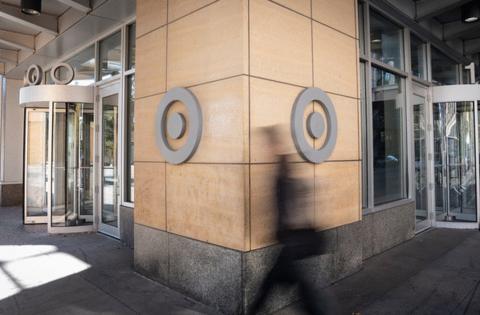More than 800 Twin Cities employees part of Target layoffs
Published in Business News
Target employees being laid off — including 815 workers in the Twin Cities — received an email at 8 a.m. Tuesday, instructing them to join a 9 a.m. audio call with human resources.
That call was supposed to outline important information, but the audio did not work for half of it, two employees said, prompting human resources to repeat the information and then send a follow-up email.
Those who will still have their jobs received emails at 9:17 a.m.
The notifications followed Target’s Thursday announcement that it would restructure and eliminate 1,800 positions, with about 1,000 people losing their jobs.
Employees were asked to work from home this week as the process took place.
Target’s playbook, though it had glitches, is par for the course in today’s corporate environment. Layoffs have become more impersonal in recent years, a trend some experts say has been accelerated by the rise of remote and hybrid work, where employees may meet colleagues only a few times a week or year.
Sometimes there’s no warning. The process might begin with an ominous video call invitation or an unexpected email from human resources — often paired with losing access to work devices.
Gone are the days when employees could hug co-workers while packing up their desks. Now, others pack their belongings and ship them to their homes.
“Layoffs have become more systematized,” said Connie Wanberg, a professor at the University of Minnesota’s Carlson School of Management. “During the pandemic, many companies had to communicate sensitive news remotely, and that practice has persisted.”
A 2024 MetLife study found employees across generations overwhelmingly want to feel cared for by their employers. But online discussions have raised questions about how that care is reflected when layoffs happen.
Some workers say they’d prefer an email to avoid the embarrassment and hassle of commuting in just to be let go. Others see the trend as part of a broader shift toward efficiency over empathy.
Large-scale layoffs aren’t new, said Erica Diehn, an associate professor of management and leadership at the University of St. Thomas’ Opus College of Business, but the effects on employees and workplace culture are significant.
“The reality is it’s hard on people when there’s a large layoff,” she said. “Particularly right now, the labor market is quite weak, so that adds to job insecurity overall.”
In the tech industry, former employees at major firms have described the process as increasingly “cold” and “impersonal.” Amazon said Tuesday it would laid off 14,000 corporate workers this year as part of its AI adoption strategy.
HR professionals say the problem isn’t always corporate indifference but the logistical challenge of managing large-scale layoffs across widely dispersed workforces.
“Organizations are under more pressure than ever to move quickly because of heavier workloads and constant change,” Wanberg said. She added that email notices allow everyone to find out at once, but the tone can come across as “matter-of-fact” and “uncaring.”
That approach, Diehn said, can deepen survivor guilt among employees who remain.
“It’s a factor of psychological well-being and it causes stress,” Diehn said. “It often leads to job insecurity and mistrust of managerial or organizational decision-making,” adding that transparency and timely communication can reduce the impact.
Those concerns surfaced last week when Target announced its latest corporate cuts. Incoming CEO Michael Fiddelke’s email to staff offered few details beyond instructing U.S. headquarters staff to work from home, fueling speculation that U.S. workers could be more affected than those in India.
It was later reported that about 80% of the cuts would come from the U.S. workforce. Employees expressed frustration online about waiting nearly a week to learn their fate.
On Tuesday, Target eliminated 528 jobs at its downtown Minneapolis headquarters and 287 at its Brooklyn Park technology operations hub, according to a filing made by Target with the Minnesota Department of Employment and Economic Development.
Affected employees will be paid with benefits through Jan. 3, and also are eligible for severance, according to a Target spokesperson.
The Tuesday 9 a.m. meeting was led by Chief Human Resources Officer Melissa Kremer, according to people familiar with the matter. The audio problems created more confusion when added to the few details shared by Fiddelke on Thursday.
Target officials could not immediately be reached for comment to confirm the timeline.
“These changes aren’t easy. And we know they’re necessary to reduce complexity, remove barriers and create the clarity and speed we need to grow and better serve our guests,” Kremer wrote in an email to staff whose jobs were not cut, adding that teams would discuss changes in the coming days.
Target took a similar approach during its last major workforce reduction in 2015, when current CEO Brian Cornell announced cuts that would unfold over two years. That announcement also came on a Thursday, followed by word the next Tuesday that 1,700 employees had been laid off.
This time, employees said they first learned from media reports that 1,000 colleagues would be laid off and 800 positions closed. Fiddelke’s note didn’t specify how the layoffs would be communicated or outline severance packages.
“There’s really no great way to handle layoffs,” said April Brasher, an HR adviser at the Society for Human Resource Management (SHRM). She added that one of the worst practices she’s seen is cutting off employees’ access immediately after a group Zoom call.
“That can be harsh, especially when people don’t have the opportunity to say goodbye to their team,” she said.
Layoffs handled poorly can also have long-term consequences for recruiting and retention. People are more likely to share their experiences on job sites like Glassdoor or Indeed, potentially influencing whether others apply.
“People expect that when they get a job, even if they haven’t signed a contract, it will last for a reasonable duration,” Diehn said.
For those who stay, morale and productivity often dip, at least in the short-term. Remaining employees are frequently asked to take on heavier workloads, Diehn said, leading to burnout amid a loss of workplace community.
Others who survived cuts might start looking for opportunities elsewhere, Brasher said, hoping to avoid potential layoffs in the future.
Companies that handle layoffs well tend to be transparent and proactive in supporting employees, Wanberg said. She added that firms should avoid rounds of layoffs over time, and follow them with “culture repair work.”
“Treat people as they’re exiting the same way they [were] treated when they were entering,” Brasher said. “There’s a phenomenon called boomerang employees, so an employer lays people off, then guess what, now they need them back. If they were treated negatively on the way out, they’re less likely to come back.”
Layoffs could become more common as companies adjust their workforces amid economic uncertainty, fears about new tariffs and the growing adoption of AI.
Minnesota-based companies such as General Mills and Cargill, along with national chains including Walmart and Starbucks, have recently made cuts as part of restructuring efforts.
“Layoffs often increase fear and frustration among employees who remain,” Wanberg said. “People start to wonder if they’re next, and that uncertainty can erode trust and focus.”
©2025 The Minnesota Star Tribune. Visit at startribune.com. Distributed by Tribune Content Agency, LLC.












Comments